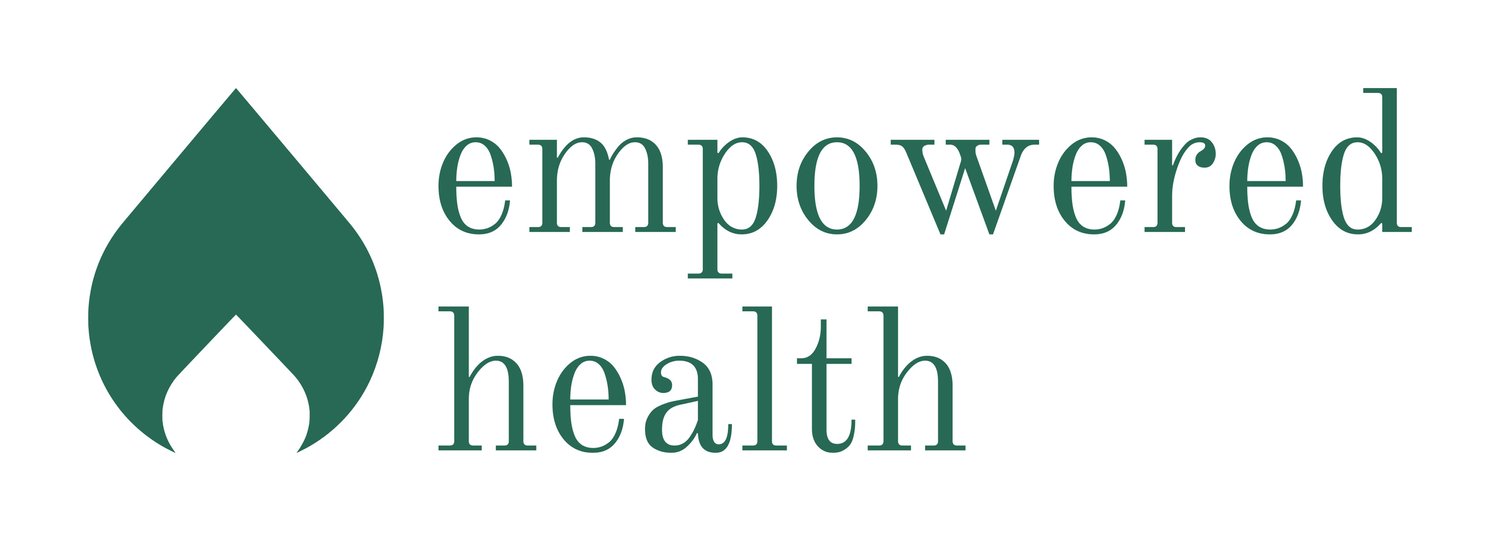Empowered Health and Ascend Health on Polyvagal Theory
Wow! I had a great time nerding out about polyvagal theory with Nick Angelis, CRNA of Ascend Health on his local TV show this week. Here’s a link to the recording if you’d like to watch the full episode. I had a ton of fun, but I don’t think I’ll quite my day job!
Our 27 minutes went by so fast, I’d like to share some of the highlights and additional thoughts below.
.
.
So what is polyvagal theory?
Polyvagal theory is, at its most basic, the idea that “how safe we feel is crucial to our physical and mental health and happiness.”
And likewise, the state of our nervous system can impact how safe we feel.
Therefore, addressing our feelings of safety and the state of our nervous system may have a positive impact on our health and sense of well-being.
.
.
The autonomic (similar to the idea of automatic) nervous system has traditionally been thought of as two main states: fight/flight (the sympathetic nervous system) or rest & digest (the parasympathetic nervous system). The polyvagal theory adds to the idea of fight/flight or rest/digest with the freeze state.
Let’s take a step back and talk about the vagus nerve.
The vagus nerve is part of our parasympathetic nervous system. The term “vagus” comes from the latin word for wandering, which is very fitting! Our vagus nerve “wanders” across so much of our body, from our ears, to our vocal cords, our heart, our lungs, our digestive system.
Our vagus nerve isn’t one single nerve, but actually forms two branches - the dorsal and ventral branch. In the video, we talk about how the ventral branch (ventral = belly) tends to be active when we’re feeling safe and social. Kindof like a puppy dog showing its belly for a pet when feeling safe. “Vagal tone” generally refers to how active the ventral vagus nerve (or parasympathetic nervous system) is.
The dorsal vagal branch helps mediate the freeze state. This is thought to be most active when people or animals are “scared to death” and freeze rather than fleeing an unsafe situation. It can also be active in times of relaxed intimacy. Which is a nice reminder that actually we use and need all states of our nervous system. While we may often refer more negatively to the fight/flight or sympathetic nervous system because of its affects on increasing heart rate and blood pressure, this is actually helpful during exercise which requires an increase in heart rate so we can get needed oxygen to our cells.
Poor vagal tone (how much our ventral vagus or social state is activated) is associated with conditions and diseases such as cardiovascular disease, high blood pressure, irritable bowel syndrome, endometriosis, auditory processing disorders and depression.
Additionally, improving vagal tone has been found to offer a wide variety of health benefits ranging from improved weight gain in infants, better baseline parasympathetic tone in children, and reduced anxiety and pain in adults.
.
.
How to increase vagal tone?
As always, I recommend checking with your personal doctor about what treatments are best for your specific body.
Fortunately for us, there are so many ways to improve our vagal tone. One of the most common and important ways is spending time with people we feel safe around.
In infants, improving vagal tone in mom can help improve their vagal tone. Other options like gentle infant massage or kangeroo care can help, too. Allowing plenty of time for free play in children is helpful.
In adults, any activities that involve using the vocal cords (e.g. singing, humming, gargling) help activate the vagus nerve.
One particular exercise that I like to recommend to my patients is called the Basic Exercise and was developed by Stanley Rosenberg, author of Accessing the Healing Power of the Vagus Nerve. We walked through how to do this exercise in the video around minute 13 if you’re curious!
.
.
Wishing you health and healing!
Resources for Learning More:
Our Polyvagal World by Stephen Porges, PhD and Seth Porges
Accessing the Healing Power of the Vagus Nerve by Stanley Rosenberg
The Polyvagal Theory by Stephen Porges, PhD
Select References:
Vagal tone in infants: https://www.ncbi.nlm.nih.gov/pmc/articles/PMC2556849/
Massage for vagal tone in infants: https://pubmed.ncbi.nlm.nih.gov/16415626/
Massage for infant vagal tone, weight gain, gastric motility: https://www.jpeds.com/article/S0022-3476(05)00186-1/abstract
Kangeroo care and vagal tone infants: https://pubmed.ncbi.nlm.nih.gov/12647930/
Free play and vagal tone in children: https://pubmed.ncbi.nlm.nih.gov/34196394/
Improved pain threshold, digestive motility: https://pubmed.ncbi.nlm.nih.gov/26728182/
Reduced HRV and burnout: https://pubmed.ncbi.nlm.nih.gov/31592938/
Antibiotics and reduced vagal tone: https://pubmed.ncbi.nlm.nih.gov/35819136/
Deep slow breathing and vagal tone: https://www.ncbi.nlm.nih.gov/pmc/articles/PMC8481564/
Vagal tone and endometriosis: https://pubmed.ncbi.nlm.nih.gov/33446725/
Vagus nerve and cardiovascular health: https://www.ncbi.nlm.nih.gov/pmc/articles/PMC6996447/

